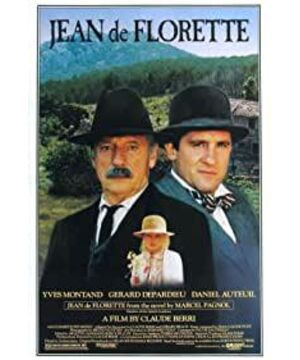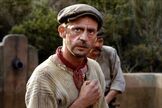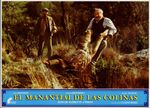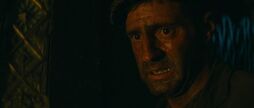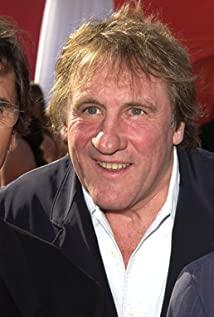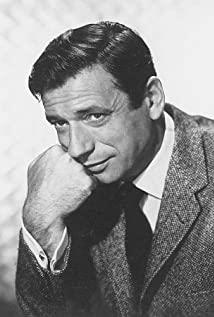Marce Pagnol is a famous French playwright and novelist. In 1946, he was elected a member of the French Academy. In the 1930s, he was criticized by some artists in the film industry for his unique film insights (he denied that film is an independent art, thinking that film is a drama in a box), but he shot based on his own film insights The film, however, is welcomed by foreign audiences (such as American audiences) due to its strong local flavor (see the book "Marseille Trilogy"-"Marius", "Fanny", "César" Etc.). "Mountain Spring" is his novel published in the 1960s. Like his plays and films, his novels mostly describe the customs of southern France. His childhood was spent in the south of France, so these novels can be said to be memories of his childhood. The plot of "Mountain Spring" has typical southern themes-irrational lust, stoic will to revenge and retribution for good and evil. This novel is therefore considered to be his masterpiece of novels.
Claude Berry divided the plot of "Mountain Spring" into two major sections when adapting the film. The first paragraph mainly describes how difficult it is for kind people to survive in the beautiful natural environment, not only to fight against the ruthless nature, but also to fight against the greed of people who are more elusive than nature. This is the theme of the film "John of Florett". The second paragraph describes the evil produced by the distorted human nature, which will eventually be avenged by the damaged good and beautiful. This is the theme of the follow-up film "The Manon of Ganquan". Claude Berry’s method of adaptation was initially regarded as unfaithful to the original (the warm childhood memories of the original were transformed into cruelty with Greek tragedy), but after the filming was completed, people had to admit that Crowe De Berry’s success.
Because of the shortage of funds, French films rarely make American-style blockbusters. Of course, French films are more artistic than American films, and the delicate artistic treatment inspires the audience to think deeply, unlike American films, which are keen to pursue visual stimulation and melodramatic emotional catharsis. But most of the audience is still willing to watch movies with huge scenes and moving plots in the cinema, especially in today's popular television. The fact that 60% of the French audience was taken away by American films is the most eloquent evidence. And Claude Berry, as a producer who is willing to pay, is considered the only person in France who can compete with American films.
Claude Berry has had a tortuous experience as a director. His famous work is "Old Man and Child" (1966), which describes the tragic years of a Jewish child and an old man during the Second World War. Thanks to the extremely real performance of the actor Michel Simon who plays the old man, this autobiographical film has gained widespread popularity among the audience. But Claude Berry’s later films ("Mazel Toff", "Lucky Guy", "Sex Shop", "Contemporary Great Man", "Lost", "Elementary Teacher", etc.) The business is too heavy to cater to fashion and is criticized by critics. Although these films show different degrees of his reflection on the events he has experienced, the sexual psychology described in the beginning of love has become a cookie-cutter. The frequently used mobile photography makes the vision tired and loses its freshness, and the plot setting is lacking. The thickness of the ideogram, let alone the symbolic meaning. In short, the film critics regard Claude Berry as a shallow commercial film maker. However, in the midst of criticism, Claude Berry also tried to establish a distinctive genre. He chose Kolusch, the comic actor in the concert hall, as the protagonist of this genre. As a result, Kolusch took the lead, and Claude Berry's role was overwhelmed by him. In 1983, Claude Berry decided to change course. He no longer shoots introspective films that cater to fashion, but turns to the discovery and depiction of reality. Marce Pagnol is a famous French playwright and novelist. In 1946, he was elected a member of the French Academy. In the 1930s, he was criticized by some artists in the film industry for his unique film insights (he denied that film is an independent art, thinking that film is a drama in a box), but he shot based on his own film insights The film, however, is welcomed by foreign audiences (such as American audiences) due to its strong local flavor (see the book "Marseille Trilogy"-"Marius", "Fanny", "César" Etc.). "Mountain Spring" is his novel published in the 1960s. Like his plays and films, his novels mostly describe the customs of southern France. His childhood was spent in the south of France, so these novels can be said to be memories of his childhood. The plot of "Mountain Spring" has typical southern themes-irrational lust, stoic will to revenge and retribution for good and evil. This novel is therefore considered to be his masterpiece of novels.
Claude Berry divided the plot of "Mountain Spring" into two major sections when adapting the film. The first paragraph mainly describes how difficult it is for kind people to survive in the beautiful natural environment, not only to fight against the ruthless nature, but also to fight against the greed of people who are more elusive than nature. This is the theme of the film "John of Florett". The second paragraph describes the evil produced by the distorted human nature, which will eventually be avenged by the damaged good and beautiful. This is the theme of the follow-up film "The Manon of Ganquan". Claude Berry’s method of adaptation was initially regarded as unfaithful to the original (the warm childhood memories of the original were transformed into cruelty with Greek tragedy), but after the filming was completed, people had to admit that Crowe De Berry’s success.
Because of the shortage of funds, French films rarely make American-style blockbusters. Of course, French films are more artistic than American films, and the delicate artistic treatment inspires the audience to think deeply, unlike American films, which are keen to pursue visual stimulation and melodramatic emotional catharsis. But most of the audience is still willing to watch movies with huge scenes and moving plots in the cinema, especially in today's popular television. The fact that 60% of the French audience was taken away by American films is the most eloquent evidence. And Claude Berry, as a producer who is willing to pay, is considered the only person in France who can compete with American films.
Claude Berry has had a tortuous experience as a director. His famous work is "Old Man and Child" (1966). The film describes the tragic years of a Jewish child and an old man during the Second World War. Thanks to the extremely real performance of the actor Michel Simon, who played the old man, this autobiographical film was widely welcomed by the audience. But Claude Berry’s later films ("Mazel Toff", "Lucky Guy", "Sex Shop", "Contemporary Great Man", "Lost", "Elementary Teacher", etc.) The business is too heavy to cater to fashion and is criticized by critics. Although these films show different degrees of his reflection on the events he has experienced, the sexual psychology described in the beginning of love has become a cookie-cutter. The frequently used mobile photography makes the vision tired and loses its freshness, and the plot setting is lacking. The thickness of the ideogram, let alone the symbolic meaning. In short, the film critics regard Claude Berry as a shallow commercial film maker. However, in the midst of criticism, Claude Berry also tried to establish a distinctive genre. He chose Kolusch, the comic actor in the concert hall, as the protagonist of this genre. As a result, Kolusch took the lead, and Claude Berry's role was overwhelmed by him. In 1983, Claude Berry decided to change course. He no longer shoots introspective films that cater to fashion, but turns to the discovery and depiction of reality.
Although the film "Farewell to the Past" (1983) still features Kolusch as the protagonist, the plot of the film is closely tied to reality: the underworld uses drugs to induce young people to become tools of crime; the retired police officer who indulges in the grief of losing his son is finally abused again The brutal anger of the forces, in order to save a young man, he finally bid farewell to depression and rose up to fight against the dark forces. The film was a huge success, and it marked a new era in Claude Berry's creative career.
Claude Berry served as a producer for many years, nurturing young directors (such as the Polish director Roman Polanski in exile in France). He believes that if French films are to compete with American films on an international scale, they must shoot huge films, and they must shoot subjects that interest the audience. "Florette's John" is his artistic practice of this concept. Then, he directed its sequel "Ganquan Manon". In 1994, he shot a magnificent movie "Sprout" based on Zola's novel of the same name. These films are high-investment, high-yield blockbusters.
The so-called blockbuster film refers to a film that was filmed for a huge scene without hesitation. This requires the director not only to have the ability to build a huge picture, but also to have the courage to command the overall situation. The sensitive director can grasp the details of conveying emotions from the magnificent image system and the twists and turns of the plot, and effectively push the plot to the climax through the orderly picture to achieve the moving goal. The film "Florette's John" is very focused on the description of the character, but this description is tightly linked to the relationship between the character and the environment. The usual "close-up" in the film is rarely used in this film. The environment of the characters is depicted without hesitation "splashing ink" or "emphasizing color". Most of the characters in the film are in the middle shot or panoramic view. In the contrast of the huge natural scenery, they appear quite small; the huge natural scenery is like a frame that imprisons them, and they can't get out of this frame. In this way, the master of the film, the number one protagonist of the film, is not a character, but the ubiquitous nature; every detail of the characters' words and deeds in their lives shows the role of natural forces on them. The film narrates a cruel story with this kind of heartfelt depiction of nature: a kind-hearted and innocent disabled person came to this picturesque mountain village with the desire to seek a peaceful life in the countryside, but he ended up in a ruined home. The end of the game. The film ruthlessly records how despicable neighbors and mountain people collude to persecute the uncontested John. John dying only hated his weakness, and never suspected that there was always a conspiracy around him to persecute him to death. Beautiful and mysterious natural scenery, houses built on cliffs like Nestle and scattered fields under the slopes, rocky roads leading to fields and residences, creeks parallel to the roads and a wide variety of wildflowers by the streams, And the old town under the mountain, all of which seemed so simple and full of antiquity. People speak dialects with heavy accents. It seems that it is very far away from modern science (hydrogeologists need to take a truck and reach the town after more than an hour of bumps). Almost all people's lives depend on spring water that flows from nowhere-this is the gift of nature . But this is not a paradise. There is a life-and-death struggle here. In order to fight for and expand the living space, these peasants who speak a dialect with a heavy accent are not simple. On the contrary, they are more cruel because of their ignorance. The destruction of the family of intellectuals proves that civilization is powerless in the face of this reality. In recent years, many films have portrayed the feasting city life, but this film takes the audience to the past, full of charm, mystery, and bloody countryside, which undoubtedly brings a kind of non-identity to the audience’s imagination.
The success of "Florette's John" also lies in the director's good use of actors. Blockbuster movies often rely on celebrities. The film does not hesitate to hire French film superstars Yves Montand and Gerard Depardieu at high salaries. But the "star strategy" is not a sure guarantee of success. The key to success lies in how the director uses stars. The film’s "star strategy" success lies in the fact that these stars not only blend with the very typical characters in the film, but at the same time maintain their original appearance as stars. Yves Montan was originally a southerner, and the actions he played, especially the southern dialect, convincingly recognized the characters he played. But at the same time, the audience always remembers clearly that this is Yves Montand. As for Depardieu, when the audience saw his hunchback for the first time, they might smile and wait for the performance below him. He talked in a gentle manner, and his words and deeds revealed his infinite tenderness for his wife and daughter, as well as his kindness and politeness in dealing with others. His concentration when reading under the light makes you have to admire the authenticity of the actors' performance. When you see him driving the donkey cart to deliver water to the water-deficient fields, you will be touched by the diligence of this good disabled man. When he is too tired to be sick, and regrettably passes away, you will be with him. Like his daughter, his wife sighed and even shed tears for his misfortune. But while you are moved, you will never forget that this is an excellent performance by the superstar Depardieu.
However, the most noticeable in the film is the actor Daniel Odeye who plays in Guolin. He is very good at performing with his eyes. Greed, cunning, cruelty, and ignorance are all in his eyes, but these negative things of human nature, he is not single, but embodies a kind of complexity of human nature. This complexity will be further expanded in the film's sequel "Manon of Ganquan".
Since the 1960s, French films have advocated novel directing techniques. The New Wave has almost beaten to death the classic directing techniques. However, by the 1980s, the classic directing technique came back due to the success of some films. The film’s directorial technique is very traditional, without any fancy, without the slightest “deepness”, and always firmly grasps a sense of rhythm and space. It is precisely because of this that John’s tragic story is so fascinating and touching. .
View more about Jean de Florette reviews


